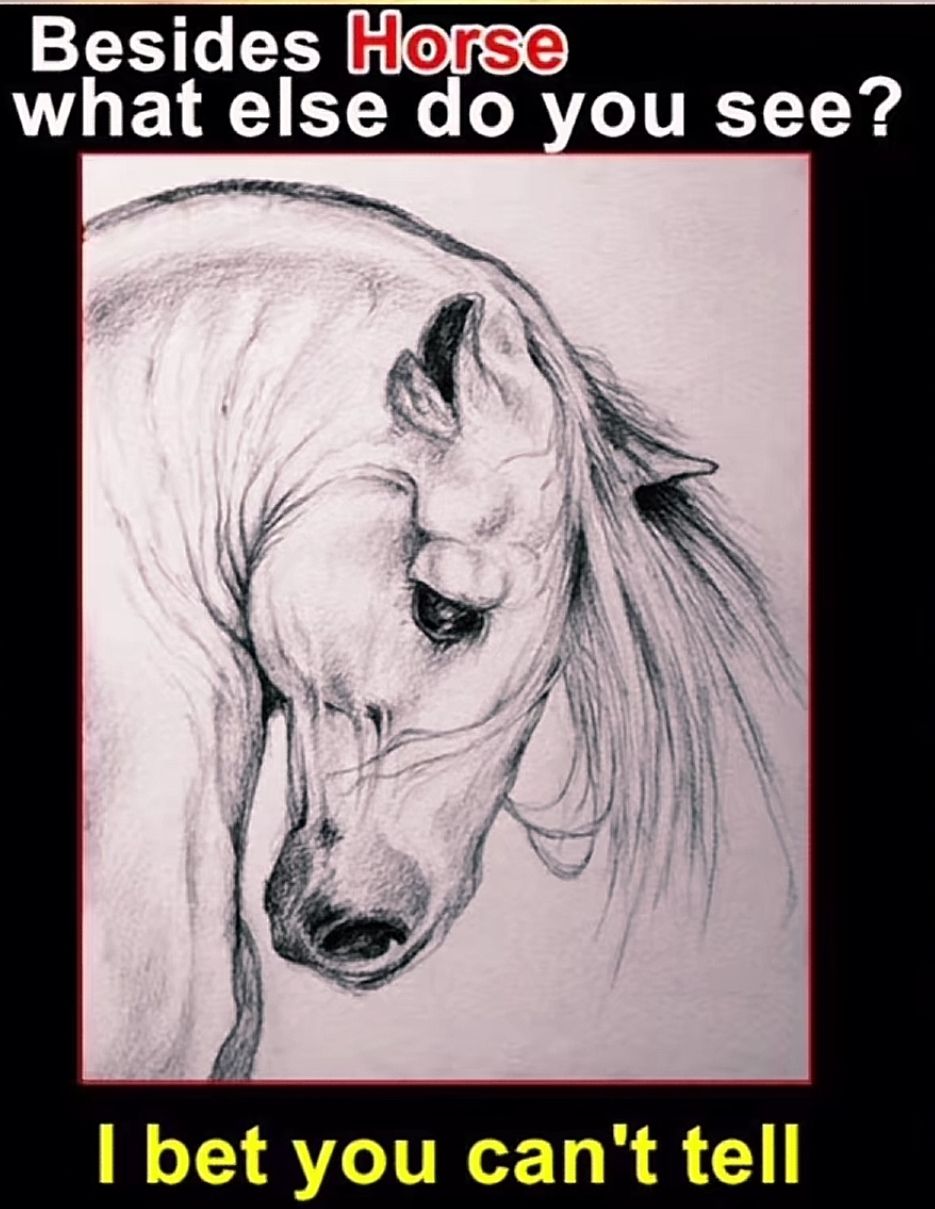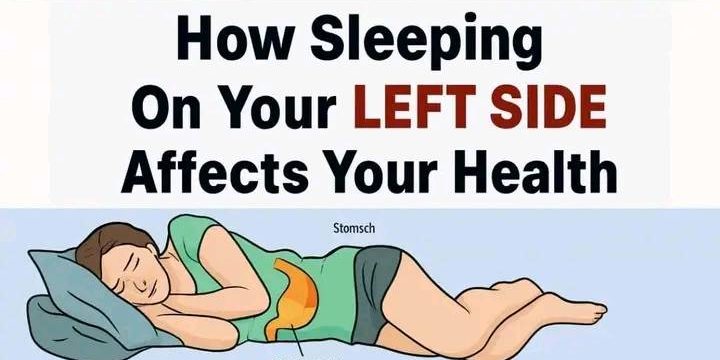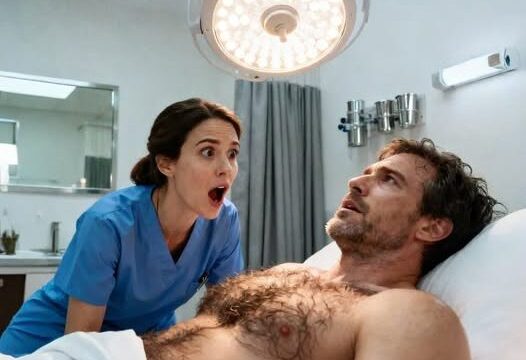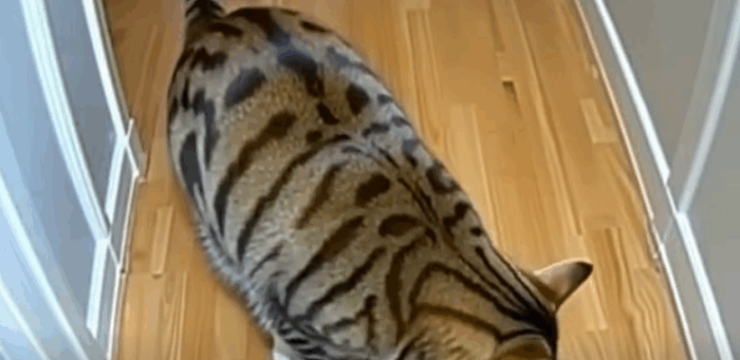At first glance, the image appears to be a beautifully sketched horse—its head bowed gracefully, its mane cascading like a silky waterfall, and its soulful eye staring out with quiet strength. But then something strange happens. Your eyes begin to hesitate, your brain glitches for just a moment, and suddenly, a thought pops into your head: “Wait, is there more to this drawing than just a horse?” Welcome to the world of mind-bending optical illusions, where nothing is ever quite what it seems.

This particular illustration is a masterclass in visual trickery. While the horse takes center stage, there’s another hidden image quietly waiting to be discovered—an image that most people miss entirely the first time around. So, the big question is: What else do you see besides the horse?
This illusion challenges you to look deeper than your first impression. It’s not just a drawing—it’s a puzzle, daring you to see what lies beneath the surface. And let’s be honest, many people don’t even notice the second image unless it’s pointed out to them. But once you spot it, you won’t be able to unsee it.
So, why does this drawing stump so many people? It comes down to how our brains process images. When we see a familiar object—like a horse—our minds jump to a conclusion almost instantly. This phenomenon is called “perceptual closure.” Essentially, once your brain recognizes something, it stops looking for other details. It fills in the gaps and moves on. That’s exactly what makes this drawing so deceptive.
The illusion works by playing on our natural tendency to focus on dominant shapes. The horse is prominent, detailed, and easily recognizable. Our brains latch onto it and filter out anything that doesn’t immediately align with that image. But hidden in the horse’s head, specifically in the area between its ears and along its mane, is something else entirely—a woman’s face.
To find the hidden face, you need to shift your focus. Start by relaxing your eyes and viewing the entire picture like it’s a visual puzzle. Don’t concentrate solely on the horse’s features. Instead, soften your gaze and observe the broader shapes and shadows. Begin at the top of the horse’s head. Examine the ears, the mane, and the shading around the forehead. Do these details seem unusually intricate or stylized? That’s because they’re forming something else.
In this case, the horse’s ear area becomes the woman’s eye. The shading above the horse’s cheek forms her nose. The flow of the horse’s mane cleverly doubles as her hair. Once you identify the woman’s face, everything clicks into place: her eye, nose, lips, and forehead are all subtly embedded into the horse’s features. It’s a perfect example of dual perception—a design technique where one image is embedded within another using shared lines and overlapping shapes.
This kind of visual illusion forces your brain to toggle between two interpretations of the same lines. And because the horse is the more dominant figure, it takes real cognitive flexibility to switch your focus and spot the face.
People often make several mistakes when trying to solve this kind of puzzle. Many zoom in too close, focusing on the horse’s nose or eye, assuming the answer lies in some tiny detail. Others look for completely unrelated objects—like additional animals, birds, or fantasy creatures—when the trick is actually more subtle. Still others overthink the image, assuming there’s no second figure at all. But the key is to take a step back and look at the full composition. Only then does the hidden image reveal itself.
If you were one of the few who saw the face right away, congratulations! You likely have strong visual perception and excellent pattern recognition. If it took you a while—or someone had to show it to you—you’re in good company. This illusion has fooled thousands of clever, detail-oriented people across the world.
So why are puzzles like this so popular, and why should you keep doing them? Beyond being fun conversation starters, optical illusions are actually great for your brain. They sharpen your attention to detail, enhance your ability to recognize patterns, and improve your cognitive flexibility—the skill of switching perspectives when faced with new information. In a way, these puzzles are like mental workouts, challenging your brain to look past assumptions and see hidden possibilities.
This drawing serves as a powerful reminder: not everything is as it seems. Even something as simple as a sketch of a horse can hold deeper layers of meaning. All it takes is a second look—and a willingness to see differently.
So next time someone shows you a seemingly ordinary picture and asks, “What do you see?” don’t rush to answer. Take a breath. Look again. There may be more than meets the eye—like a woman quietly watching from within the mane of a horse. And when you spot her, go ahead and share the puzzle with a friend. Let’s see how long it takes them to find her, too.





